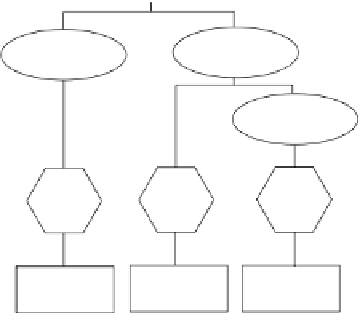Robotics Reference
In-Depth Information
example, consider the word “bear” in the phrases “men have the right to
bear arms” (where it is a verb) and “the bear ate the honey” (a noun).
Another problem is being able correctly to attach a modifying phrase to
the correct subject, as for example in the sentence “The cat ate the fish
on the grass”—does “on the grass” relate to the cat, meaning that the cat
was on the grass and ate the fish, which might have been on a plate or in
a bowl, or does it mean that the fish was on the grass when the cat ate it?
This particular problem grows rapidly as the number of such modifiers
increases, viz: “The cat ate the fish with a gleam in its eye on the grass”.
Who has the gleam in its eye—the cat or the fish? For these and other
reasons the process of syntactic analysis requires a parser, the end product
of a syntactic parse being a tree representation of the sentence, such as the
one in Figure 51, showing a short sentence split up into its noun phrase
and verb phrase. (Most syntactic parse trees are considerably larger than
this one.)
When the grammatical structure of a sentence has been analysed, the
next stage is semantic analysis, in which the task of the software is to rep-
resent the meaning of the sentence, possibly as some sort of logical ex-
pression as for example in the Advice Taker. Part of the semantic analysis
process involves disambiguation because, as we have seen, ambiguity is
one of the biggest bugbears of NLP. Another task of the semantic analyser
is to perform what is called
case-role analysis
, to determine whether a word
or phrase is the subject of the sentence or whether it has some other role.
Sentence
Verb Phrase
Noun Phrase
Noun Phrase
Noun
Noun
Verb
Like
Christmas
Children
Figure 51.
A parse tree






